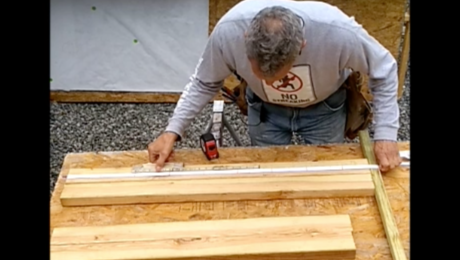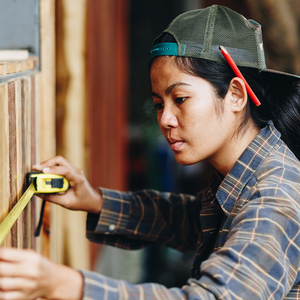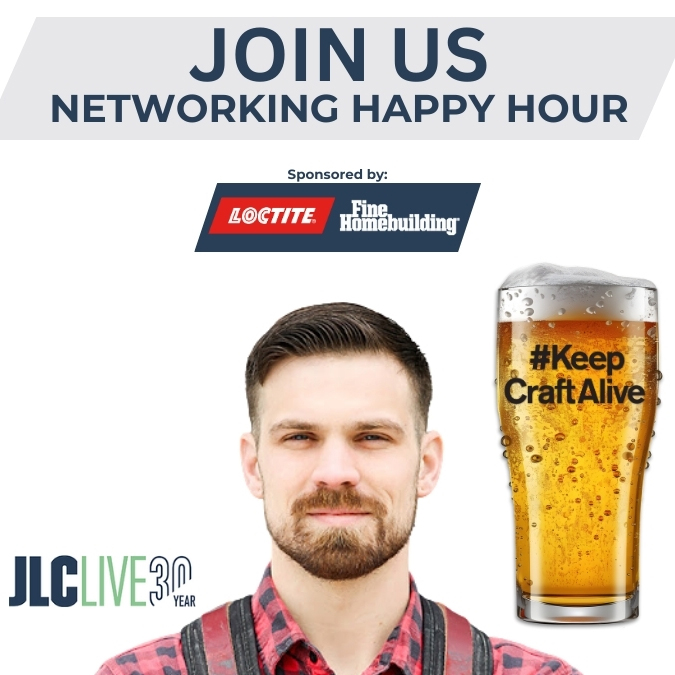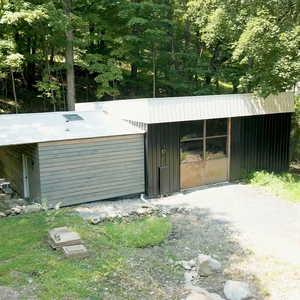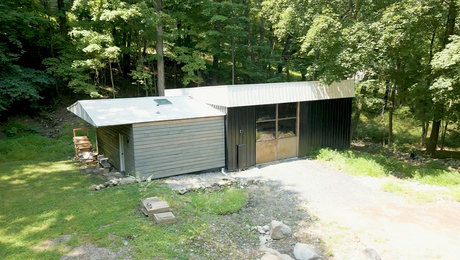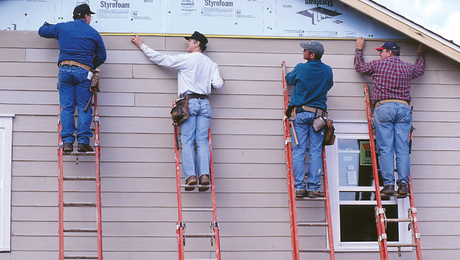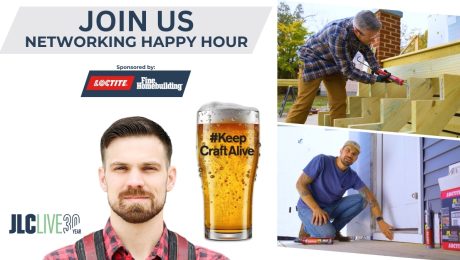The Fine Homebuilding Interview: Chelle Travis
This executive director champions the next generation of skilled tradespeople.
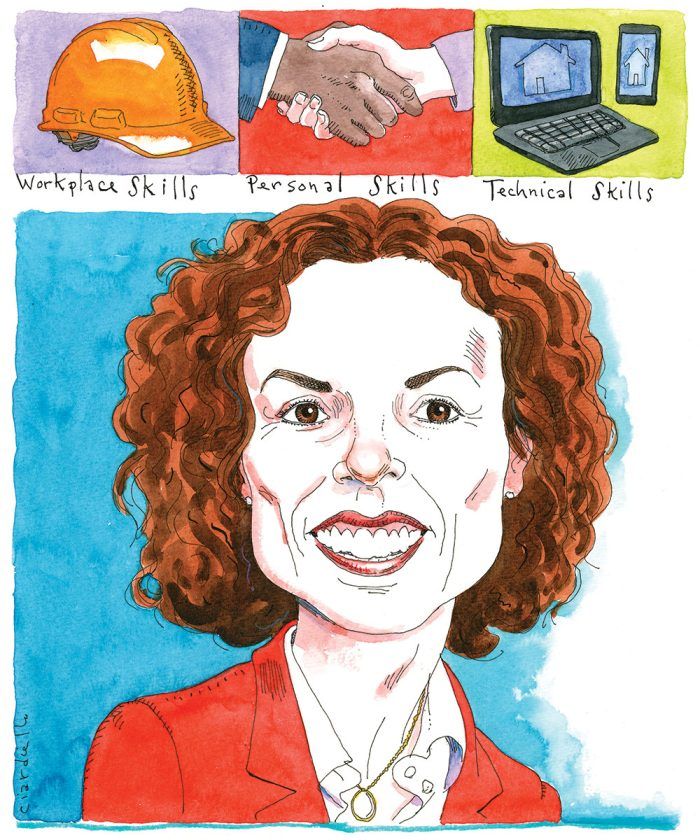
Synopsis: SkillsUSA is a national organization serving nearly 400,000 teachers and students in career and technical education programs throughout the United States. In this interview, executive director Chelle Travis describes the mission of the organization and how it is responding to the need for workers skilled in the trades.
Chelle Travis is the executive director of SkillsUSA, a national organization serving nearly 400,000 teachers and students in career and technical education programs. Travis was appointed to lead a staff of 38 that manages the organization’s work throughout the United States. SkillsUSA’s mission is to empower students to become skilled professionals, career-ready leaders, and responsible community members.
With more than 20 years of experience in career and technical education, Travis has served in a variety of academic settings, including secondary institutions, universities, and technical and community colleges. Most recently she was the senior director of workforce and economic development at the Tennessee Higher Education Commission (THEC), where she was charged with building partnerships with employers, workforce agencies, and postsecondary institutions. She was the primary point of contact at THEC due to her knowledge of technical education, work-based learning experiences, alternative credentialing, competency-based education, and experiential learning. She also managed all external workforce grants issued by THEC.
Travis formerly served as associate vice chancellor for students for the Tennessee Board of Regents College System of Tennessee, where she provided leadership in promoting student initiatives across 40 technical and community colleges. Travis holds bachelor’s and master’s degrees in business administration from Middle Tennessee State University and is currently a doctoral student at Tennessee State University.
AF: SkillsUSA has been around much longer than I had assumed. Can you tell us about the original mission and how it has evolved to meet increasingly urgent workforce demands?
CT: Let me start by explaining what SkillsUSA is today. Simply put, SkillsUSA is America’s proud champion of the skilled trades. We are a national student organization committed to building the future skilled workforce our nation depends on. We connect education with industry to produce graduates who are career-ready on day one.
SkillsUSA serves career and technical education (CTE) students and teachers in middle schools, high schools, and college/ postsecondary institutions nationwide. We are not an after-school club or an extracurricular activity. We are very much an intra-curricular program that’s embedded in classroom curriculum. In fact, we now represent over 140 occupational areas of study, from 3D animation to welding and just about everything in between.
Through SkillsUSA, our students learn the technical skills those occupational areas demand while also gaining essential life skills that set them apart as leaders, achievers, and difference-makers. We offer so many unique opportunities for these students to grow on many different levels, from conferences to leadership-development activities to competitions, and those happen on the local, state, and national levels. For example, our competition programs begin on the local level, where students compete against their peers in a variety of skilled and leadership areas. Those winners progress to the regional level, then to the state level, and then to our national SkillsUSA Championships, which we hold each June as part of our National Leadership and Skills Conference.
To see nearly 6000 state champions from every corner of the nation all together and competing in more than 110 skilled and leadership competitions is a truly awe-inspiring site. These are some of the most highly skilled, technically advanced students in the world, and there’s no better testimonial for the power of skills than witnessing them in action.
We also recognize the importance of making sure that the skills being taught in the classroom are the skills that are actually needed for entry-level workers in the real world. We offer different opportunities for industry members and organizations to influence the curriculum and connect directly to the classroom. In fact, all of our competitions are created by industry members and are judged by them against a set of what we call “technical standards.” The competitors are often hired right off the conference floor.
To get back to your original question, our mission is to empower students to become skilled professionals, career-ready leaders, and responsible community members, and that really hasn’t changed much since our founding. We started with 14 member states and have since become one of the largest career and technical student organizations in the country. We’ve also maintained a focus on elevating the perception of the skilled trades. We want to make sure people understand that these skills are, have been, and always will be essential to our way of life.
As far as how we’ve evolved to meet the needs of a changing workforce, I’d offer our SkillsUSA Framework as a prime example. The Framework is the foundation of all our programs, and it’s made up of three components: Personal Skills, Workplace Skills, and Technical Skills Grounded in Academics. It was developed with the help of industry partners who were expressing a need for entry-level workers with more than hands-on skills alone. They were also desperate for employees who could communicate, work well on teams, and adapt to change—all those intangible life skills that are needed for success in any career and for success in life. Those are the skills our students develop, and that’s what truly sets them apart. We like to call it “the SkillsUSA difference.” It’s the total package.
Businesses are so passionate about supporting our organization because they see their future in our students. We all know the skills gap is real, and that gap is a legitimate threat to so many industries related to the skilled trades. We are working to fill that gap, and part of how we do that is to change the way the skilled trades are viewed while spotlighting the great opportunities that exist in these career paths. We’ve been working to do that since our founding, and we’re continuing to grow as more people understand and get on board.
I’m excited that this year we have had the largest membership year in our history, with over 380,000 student and teacher members and more than 440,000 total members across the United States. That growth reflects the fact that our message is being heard and our mission is being accomplished.
AF: What is another example of the way SkillsUSA has evolved?
CT: Another way we have evolved is that SkillsUSA’s membership is now open to middle school students, not just high school and college/postsecondary students who are involved in career and technical education. That membership gives students access to resources, leadership opportunities, and skills-development opportunities. We have recognized the need to start earlier.
The goal of starting membership at the middle school stage isn’t to encourage the students to make a decision about what career to pursue, but rather to expose them to the wide variety of opportunities that exist. We’re making sure that students are aware of the opportunities available to them—opportunities to grow their sense of self-confidence, discover an occupational identity, connect with a supportive peer network, experience the joy of serving their communities, and realize that they are capable of much more than they may have thought possible.
AF: Going back to 1965 and how things have changed since, can you focus on the home-building industry portion of SkillsUSA’s evolution?
CT: Home building is a big focus for us. Our instructors make sure their curriculum keeps up with industry standards as the needs of businesses and of the construction industry change, as the tools to do the job evolve, as technology evolves, and as environmental and sustainability requirements change within the construction industry.
In fact, I’m going to an international conference soon. We will be talking about the changes in the construction industry where sustainability and environmental impacts are concerned. We want to make sure we are connecting with the right partners. Staying ahead of those environmental concerns is still an evolving process on our part. We are working to ensure that we are incorporating those concerns into our technical standards; into the job-specific skills for our students. Environmental impacts also include the evolution of health and safety in the workplace. That has really changed over the years.
AF: How would you characterize the students who are involved in SkillsUSA?
CT: It comes back to the SkillsUSA difference I mentioned earlier. Our students are individuals we want living in and leading our communities. What we hear from our partner employers is that SkillsUSA students have the skills they are looking for— the skills that many graduates in many areas are lacking. Those are ingrained in all the programming that we do at the national, state, and local levels. The Framework is something students work on throughout their time with SkillsUSA, and it really does make a difference. We often hear from our partners that when they see “SkillsUSA” on a resume, that resume goes to the top of the pile because they know that person has a certain set of skills that sets them apart.
The students who come out of our SkillsUSA programs not only make me proud as the executive director, but they also make me look forward to our future, because I know that we are in good, skilled hands. But it’s not just their trade skills; it’s also their ability to make our communities and our nation stronger.
I think many of our recent graduates value hard work, but they also value community and service. We make sure we’re listening to younger generations. It is our responsibility to know their needs and the barriers they face when they’re ready to enter the workforce and to do our part to make sure that the workforce reflects them as well. We constantly hear about narrowing the skills gap, which is going to require a diverse workforce, and we want every student to be aware of the value of pursuing a career in the skilled trades. It’s important for the skilled trades to be seen not only as a wonderful career path with a family-sustaining wage, but also as part of a welcoming workforce.
For example, the percentage of women in the construction industry is rising, and that is very positive. But that percentage is still only in the teens, relative to the total industry workforce. Even though those numbers are improving, we still have a lot of work to do. Our students need to see themselves reflected in the workforce.
AF: What other challenges exist for technical education?
CT: Just as there’s a shortage of qualified workers in construction, there’s a shortage of instructors who possess both industry experience and effective teaching skills. It can be very difficult to find someone who is willing to go from industry into the classroom, because many times you’re asking them to take a pay cut. It must be someone who has a passion for the field and a desire to teach the next generation of skilled professionals. Many prefer industry positions over teaching roles. That is one challenge we face.
Another challenge is the rapid change in technology and the cost of the technology and equipment itself. The pace at which technology advances has created a constant challenge for educators to keep their curriculum up-to-date. Outdated content can mean that graduates lack the skills they need when they get into the workplace.
So it’s important for us to make sure our technology is up-to-date, but there’s also a cost factor to that. The cost of technical education is expensive when you consider all the equipment and the materials involved. It can limit access to education if there’s a cost of equipment to the individual. It’s much more expensive to develop and maintain a technical education program than an English class. As a society we must meet the needs of our future by funding these programs.
We also need to ensure that programs are funded in underserved communities, because often the cost for technical programs prevents this type of education from being available. Funding also affects our ability to keep an overall commitment to technical education.
Finally, as I have already mentioned, there is the challenge of how technical education and the skilled trades are perceived. However, I think we are doing a lot to dispel the myths around working in the trades. The trades represent good, high-paying careers that can last a lifetime. We should honor those trades and those tradespeople. It’s important for us to ensure that those who help students make their occupational or educational choices (parents, counselors, administrators, etc.) are aware of and knowledgeable about the opportunities that exist.
AF: How did SkillsUSA come to partner with Fine Homebuilding for the Keep Craft Alive initiative?
CT: Fine Homebuilding has been a partner with SkillsUSA since 2017, and I think our missions are truly aligned. We both have a drive for elevating and igniting a passion for the skilled trades. I think that is what Keep Craft Alive is all about. Every year Fine Homebuilding supports the #KeepCraftAlive Scholarship with SkillsUSA. Students in construction-related disciplines can apply for financial support so that they can continue their training and education. It’s a vehicle to ensure that we attract and retain students focused on these critical skill areas. Keep Craft Alive aligns so well with our mission and the students that we serve. Fine Homebuilding has been a great partner.
AF: How can readers support the SkillsUSA programs?
CT: You can buy a Keep Craft Alive T-shirt from keepcraftalive.org, or just donate to the cause. All profits go to the Keep Craft Alive Scholarship Fund, which is sponsored by Fine Homebuilding and SkillsUSA. It’s a great, easy, and indirect way to get involved.
A more direct way to get involved is to visit skillsusa.org. SkillsUSA has nationwide membership in all 50 states, two territories, and Washington, D.C. On the website, you will see our state directors for every state association that we serve. By connecting with the director in your state, you can find out what is going on in your state and local chapters. Depending on where your talents lie, you can get involved on an advisory committee, with our competitive events, with a leadership opportunity, or by helping students with their resume writing or interview skills. You can find all kinds of opportunities through your state director.
There are also opportunities with us at the national level. If someone is interested in connecting either in a service or funding capacity at the national level, contact us at [email protected]. If you have any questions about how to get involved, we can answer them.
Remember, skilled trades keep the nation moving. We keep your lights on and put the roof over your head. Without skilled professionals, our nation would not be competitive. The future of our nation is in the hands of our future skilled workforce. I think the future is in very capable hands, but we must continue to encourage and elevate the skilled trades. We don’t want to be the best-kept workforce secret. We want to make sure that we give all students opportunities to make decisions about the career choices that are right for them and their families, and that we value all these opportunities for our students and for the future of our nation.
Aaron Fagan, a former associate editor for Fine Homebuilding, is a senior editor for Gear Technology and Power Transmission Engineering magazines.
Drawing: Joe Ciardiello
From Fine Homebuilding #320
RELATED STORIES

